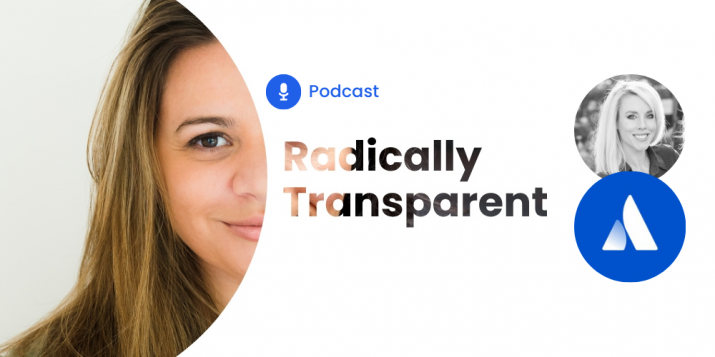
5 proven strategies for improving your social media engagement
Putting yourself out there is never easy, particularly when driving engagement on social media feels like a game of part luck, part guesswork. But it doesn’t need to be that way.
Don’t get us wrong – social media will always be something of a mystery. Then again, there are plenty of tried-and-tested techniques out there for brands to adopt if they want to paddle out of those stagnant waters and get that social media boost they sorely need.
At Oktopost, we’ve got the eagle-eye view on social media – and how best to use it. So, whether you’re feeling stuck or just want to keep the momentum going, here are the best strategies for social media publishing that drive engagement and kickstart conversions.
Jump to Section
- Be ‘the Active One’
- Be ‘the Funny One’
- Be ‘the Smart One’
- Be ‘the Chatty One’
- Be ’the Sentimental One’
What to Choose?
1. Be ‘the active one’
They say absence makes the heart grow fonder but, let’s face it, that phrase gained ground long before the term ‘social media’ was ever even invented. When it comes to the feed, FYP, or homepage, your absence is tantamount to your forgettability. Sure, your follower count is unlikely to drop if you simply fade out of view, but what’s a follower count compared with interactions, share of voice, conversions, and an overwhelmingly positive (rather than neutral) sentiment?
As always, there’s a balance to strike. Brands that post too much are undermining their social media presence as much as brands that don’t post enough. Most of us have unfollowed at least one account that got too Tweet-happy, too comfortable with the ‘Post’ button, or too invested in their own Stories.
This is where the importance of pre-scheduling posts on your social media publishing platform comes in, but also the importance of a flexible strategy – one that can bend to accommodate time-sensitive posts (say, when a particular trend starts to gain momentum on a particular channel).
If you can stay consistent about working to a balanced schedule for social publishing, it’s a lot easier to be active and engaging without over- or under-doing it.
2. Be ‘the funny one’
We could write a list as long as a CVS receipt of brands that have found tremendous success using humor on social media. From Wendy’s to Netflix, the B2C world is positively brimming with examples of brands that put forth a strong combination of deadpan delivery, memes, smack talk (with customers or other brands), and self-effacing humor.
While the B2B world is a little more serious-minded than its counterpart, it’s definitely had its fair share of funny moments. The communication platform Slack, for instance, often centers its marketing campaigns around common workplace bugbears – an excess of meetings, for instance, or a flooded email inbox. It’s very un-serious about the way it talks-up its solutions to those pain points. There are rainbows, unicorns, anthropomorphized animals…everything you wouldn’t expect to see in a B2B campaign.
In 2015, iStock teamed up with Twentieth Century Fox to poke a little fun at the archetype of the corporate stock image – the exact sort of photo countless businesses have used on their own sites, advertisements, and social posts over the years.
The star of these images? Vince Vaughn, along with the cast of the new-for-2015 movie Unfinished Business. The images were clearly intended to roast the classic blue-and-grey color scheme, smiling professional vibe stock photos are known for, and it went down a treat on social media.
Being the funny one is always more of a challenge than a good company makes it out to be. There is an obvious risk to making jokes through a professional social media account. They could fall flat, which is embarrassing, or they could cause offense, which is a whole lot worse. For instance, a brand like Netflix, known for its ability to hijack millennial trends, needs to work within a rigid framework to avoid doing more harm than good. At the same time, the final Tweet or TikTok needs to feel organic, easy, and effortless.
If you can master that, then there’s a huge reward waiting for you.
Recommended for further reading
3. Be ‘the smart one’
We know what you’re thinking: a well-timed joke or meme here or there may grab people’s attention, but thought leadership (that ultimate target of any B2B social media strategy) is built upon insight, wisdom, knowledge, and trustworthiness, not a LOL-worthy punchline.
And, of course, you’d be right.
Thought leadership is a real goldmine when it comes to delivering clear, measurable results from social media. If you can consistently publish informative content that offers your (growing) audience a fresh perspective on a common pain point – or really just any point of interest in your industry – then you’ll be doing something very, very right.
Educating followers, starting conversations, and driving engagement means establishing yourself as a true authority in your industry. It’s a tool that’s being leveraged by brands across the B2B board. Why? Because B2B decision-makers consume their fair share of content before they reach those decisions.
The great news is, there’s always a topic worth shouting about. Whether it’s something that fits securely within your niche, or something that impacts the wider world of business – for instance, climate change and sustainability, which saw a 112% increase in engagement in 2022 – you’ll never run out of talking points, provided you invest sufficient time into quality content creation.
Being ‘the smart one’ is one of those classic, evergreen choices. Thought leadership will never go out of style and, provided you know your stuff, it’s a much more scalable tactic than injecting humor and Gen-Z-style creativity into everything you post. What’s more, regular, thought-provoking posts that encourage followers to join in will generate invaluable customer engagement metrics through your social media management platform. With these, you can hone your strategy as you go.
4. Be ‘the chatty one’
We’ve all experienced plenty of each: brands that post but never interact with their followers, no matter what conversations spark-up in the comments, and brands that make it a point to interact as much as possible with commentors.
Obviously, it’s not as black-and-white as all that. There are a lot of brands out there who do respond to the majority of follower interactions, but often with (very obviously) stock responses, pre-written with the intention of pasting them under any comment that remotely fits the bill.
When you consider the value customers attribute to brands that manage to behave and interact like a collection of individuals, rather than maintaining that polite-but-stoic ‘business persona’ that we all know so well (particularly in B2B), the value of being ‘the chatty one’.
But – we hear you say – being the chatty one is exhausting! It’s time-consuming and labor-intensive, constantly monitoring those social channels for interactions.
It can be, unless you have the right community management tools to make interacting with followers more efficient. By centralizing that key aspect of social media management on a single platform, you can keep on top of interactions, rather than falling short with silence or stock responses that miss opportunities to give followers a real sense of who you are.
5. Be ’the sentimental one’
No, we’re not saying you need to post about your childhood rabbit and your memories of holidays past. Nevertheless, a little sentimentality and feeling never did anyone wrong.
What we’re talking about is giving your brand voice a more personable edge. Leaning into your community management is a great start, but there are plenty of other ways to make your customers feel valued, and to convey your person-centric philosophy to followers.
UGC, or user-generated content, is a firm favorite in 2023, and looks ready to dominate digital marketing trends long into the future, particularly as the metaverse starts to take hold. From testimonials to reviews – or even just Tweets or Instagram posts that mention your brand – celebrating UGC is a great way to affirm your brand’s genuine interest in its customers, and how they feel about you.
Plus, if customers have got good things to say, why wouldn’t you want to shout about it? It’s about wielding the power of social media engagement.
Another great way to coney your values is to focus more on your employee-generated content – insights into the very people who make your brand what it is. Employee-generated content is great for building on employee advocacy, but also for diversifying your own social posts and making your channels feel more personable. This is something B2C companies are exploring more and more – bringing their talent out of the back-end – and absolutely makes a splash in B2B.
What to choose?
There are obvious pros to every one of these strategies, whether for generating engagement, curating social media metrics, or driving conversions, so how do you figure out which one you want to be?
That’s the thing – you don’t have to choose. By combining elements from all five strategies and exploring a range of different types of posts for engagement, you can build a well-rounded and charismatic social media presence across your channels – one that you can continue scaling and building upon as time goes by, without suddenly feeling like you’ve hit a wall.
Regular posting is one of the best ways of measuring social media engagement. Each post yields so much insight into your audience and your performance, so build your content publishing strategy to last.


